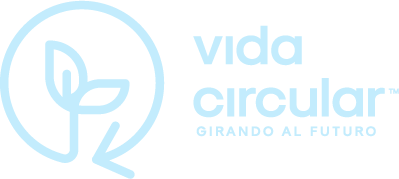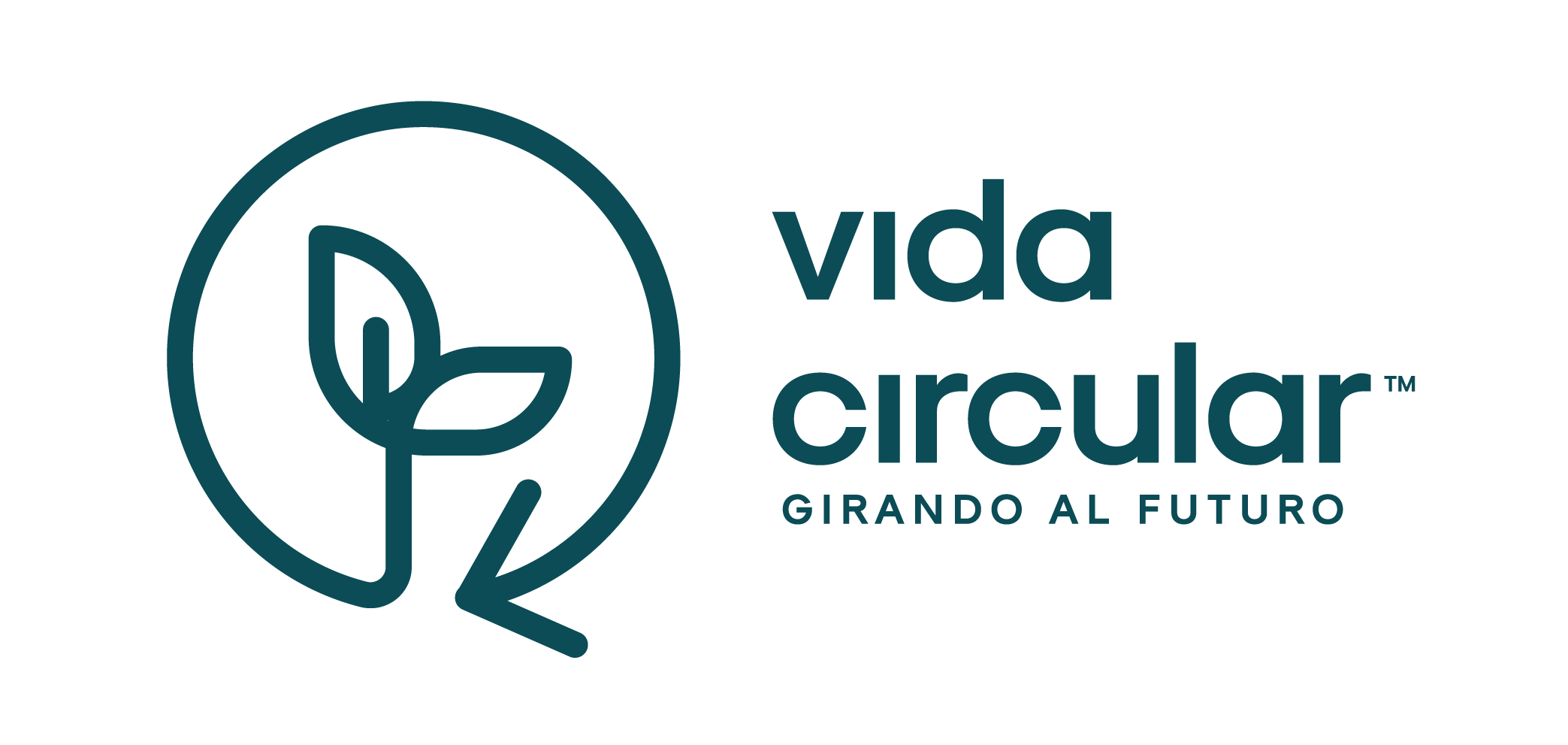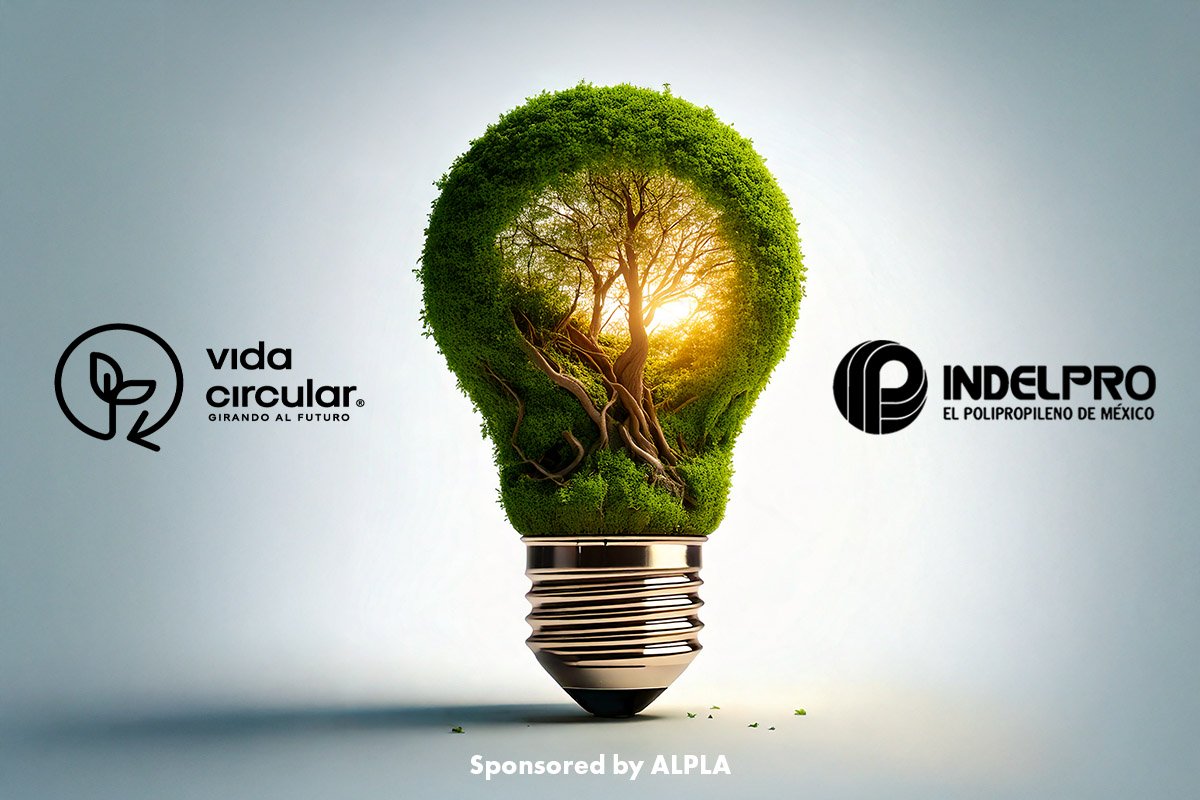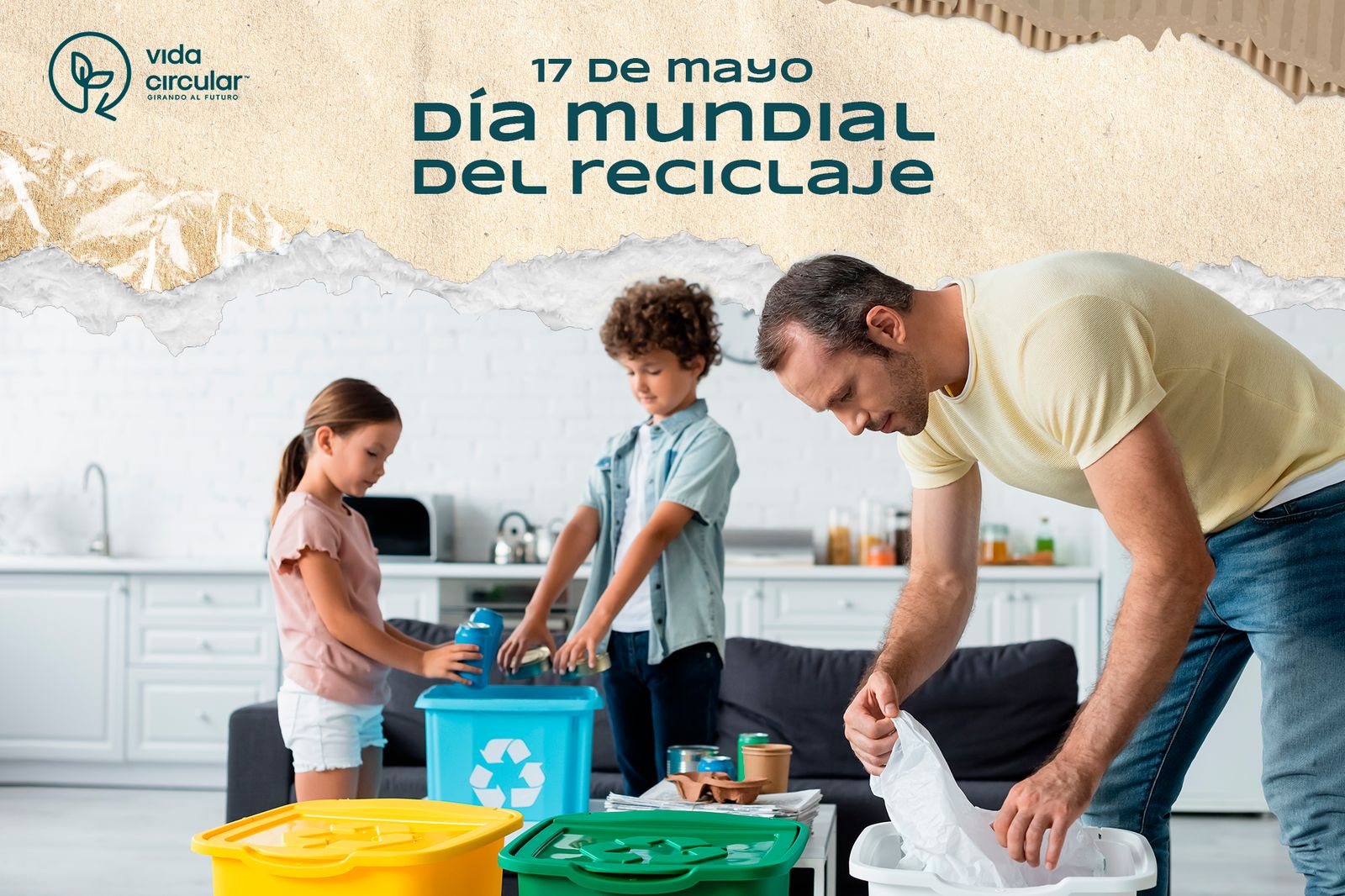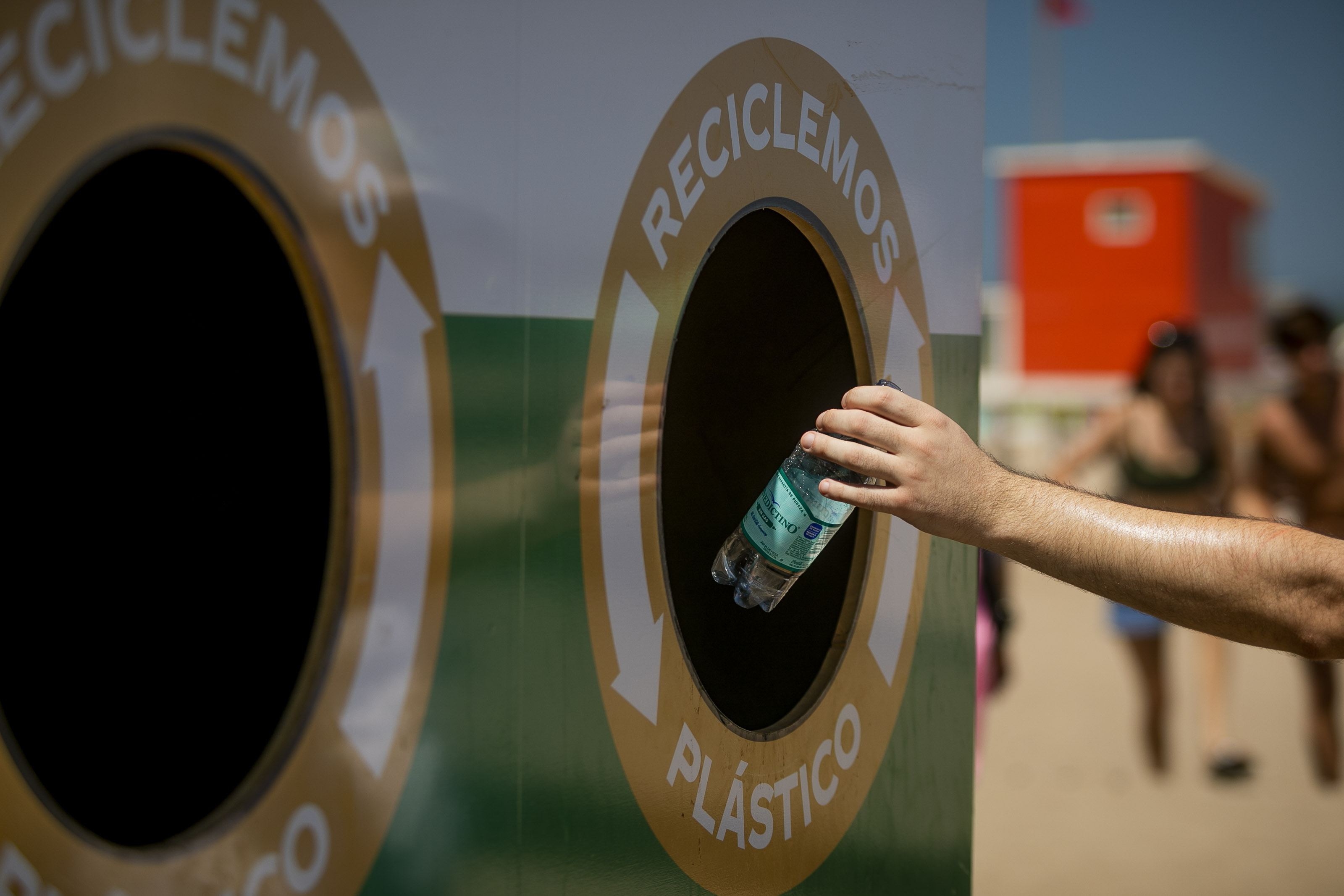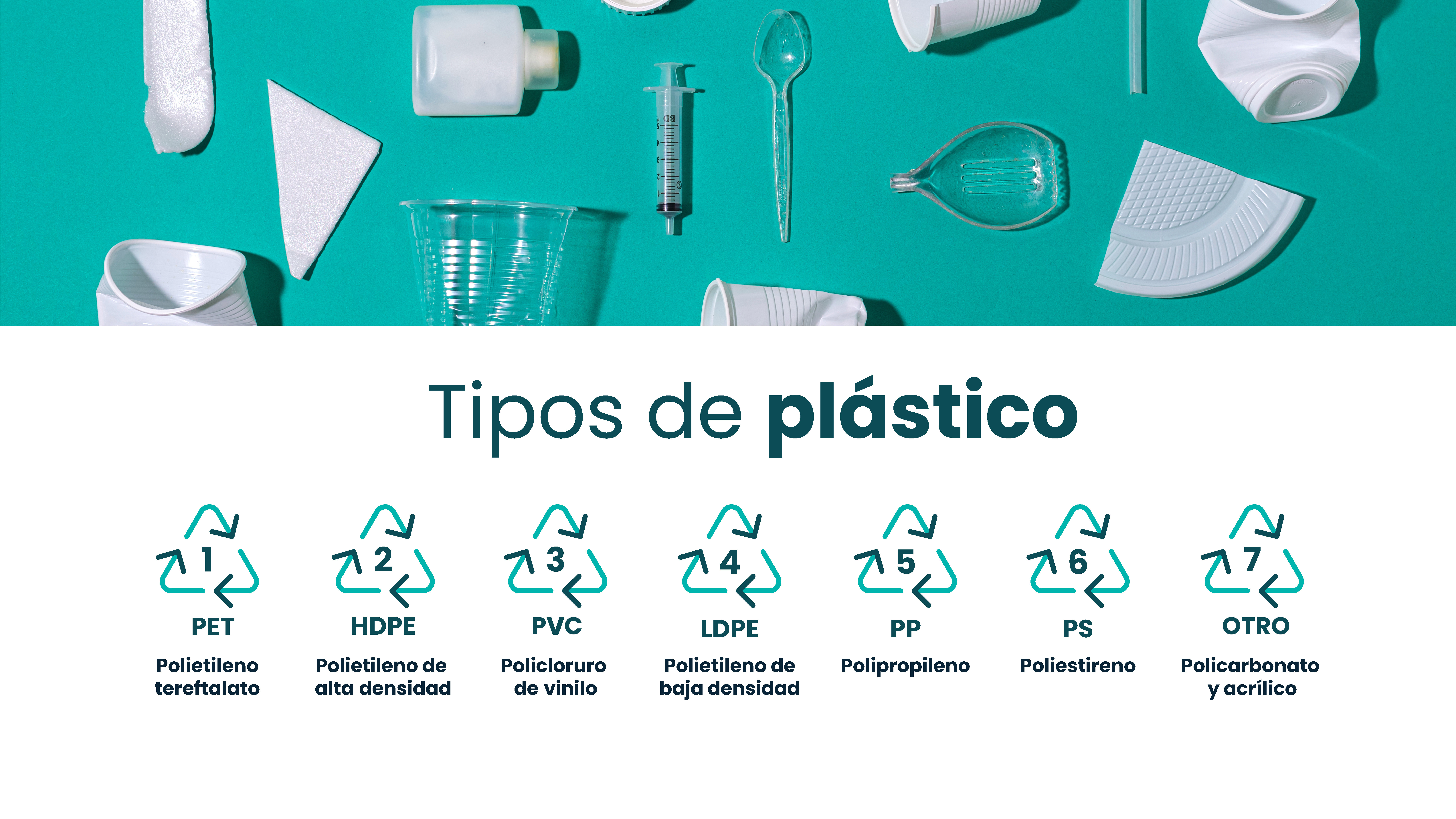
Types of plastics, classification and their correct separation for recycling
Types of plastics according to their number and classification
1. PET or PETE (Polyethylene terephthalate)
- Classification number 1: This plastic is most commonly found in beverage bottles, food containers and some disposable products. It is light, resistant and widely used in our daily lives, so it is easy to find in almost every home. Because it is so versatile, recycling it is one of the easiest ways to give this material a second life.
- Recycling: PET is one of the easiest plastics to recycle. Once collected, it can be processed into new products, such as fibers for making clothes, carpets or even new packaging. It can be recycled several times, so it has great recycling potential and can be transformed into many other useful products.
2. HDPE (High Density Polyethylene)
- Classification number 2: This is another plastic that we use a lot in our daily lives, especially in containers such as bottles of detergent, milk, juices and other liquid products. This material is quite resistant, which makes it perfect for products that need to be protected from moisture and chemicals. In addition, it is very durable and does not deform easily, making it a very reliable choice for all types of containers.
- Recycling: It is also one of the easiest plastics to recycle. Once it is collected and processed, it can be transformed into a variety of new products, such as pipes, plastic containers and other useful items. Because it is very strong, recycled HDPE can have a long service life in new applications. It is also recycled efficiently, which helps reduce the amount of plastic reaching landfills and contributes to a more sustainable cycle.
3. PVC (Polyvinyl Chloride)
- Classification number 3: PVC is a plastic used in a wide variety of products, especially in construction. It is found in pipes, windows, cables and even some types of flooring. This material is quite versatile and has become a popular choice for many applications due to its strength and durability. It is used in products that need to be strong and will last a long time, such as water pipes or window frames.
- Recycling: Like other plastics, it can also be recycled. However, the recycling process is a bit more complex, as this plastic usually contains some additives to make it more flexible or resistant. Despite this, recycled PVC has great value and can be transformed into useful new products, such as vinyl flooring or building materials. Thus, when properly recycled, PVC can continue to be useful in new applications, contributing to a reuse cycle that helps reduce the amount of new material we need.
4. LDPE (Low Density Polyethylene)
- Classification number 4: LDPE is a plastic that we have probably used on more than one occasion without realizing it. It is the material of plastic bags, wrapping, some protective films and certain flexible packaging. It is very light, flexible and strong, making it ideal for products that need to bend, roll or conform to different shapes. In addition, it is practical for protecting products because it also offers some moisture resistance.
- Recycling: It can be recycled, although it requires a little more attention in the process. When recycled correctly, this material can be turned into things like new plastic bags, produce covers, sheeting or industrial wraps. While it may sometimes seem that these bags and wraps don't have a second life, recycling shows that even this type of plastic can be transformed into something useful. So, if we separate it correctly, we are helping it to remain a functional and practical material.

5. PP (Polypropylene)
- Classification number 5: Polypropylene is a plastic that we use a lot in everyday products such as bottle caps, yogurt containers, food packaging and even in some textile materials, such as clothing or carpets. What makes polypropylene unique is its resistance to heat and chemicals, so it is used in products that need to be more durable and resistant to high temperatures. It is quite a versatile material that has many practical applications.
- Recycling: Recycling PP is entirely possible, although it is not as common as other plastics. When recycled, polypropylene can be transformed into new useful products, such as other packaging, components for the automotive industry or products for the industrial sector. Although its recycling is not as common, by doing it correctly, we are helping to ensure that this material can continue to be useful in other ways, helping to create new products and reducing the need to generate new plastic.
6. PS (Polystyrene)
- Classification number 6: Polystyrene is a plastic found in products such as disposable cups, single-use cutlery and food containers, especially those in take-away packaging. It is an inexpensive and very versatile material, so it is quite common in everyday items. Thanks to its lightness and ease of molding, it is used in a wide variety of products that we need in a quick and practical way.
- Recycling: PS recycling can be a bit more complicated, but still has great potential. This plastic can be processed and transformed into other products, such as molds, insulation material and some types of accessories. Although its recycling may require special processes due to its structure and density, it is still possible to give this material a new life. Therefore, although the recycling of unicell is possible, it requires very careful handling from its use to its final disposal, and it is important to look for alternatives to reduce its consumption and reuse it whenever possible.
7. Other (various plastics, including polycarbonate and acrylic)
- Classification number 7: This group is slightly different because it includes a variety of more complex plastics, such as polycarbonate and acrylic. These materials are found in products such as reusable water bottles, eyeglasses, compact discs and even electronic or medical components. The interesting thing about this category is that it includes plastics with very specific properties, such as high transparency, strength or rigidity, making them useful for more specialized applications.
- Recycling: The recycling of plastics in this category can vary depending on the specific type of material. For example, some polycarbonates can be recycled and transformed into new technical products, while other materials, such as acrylic, are processed to create design parts or industrial applications. Although recycling them requires a more detailed approach due to their complexity, it is still a way to give them a new life and make the most of their unique properties. Separating them properly is key so that they can be handled correctly at recycling centers.

How can we contribute to the recycling of plastics?
Recycling plastics is an excellent way to make the most of these materials and give them more than one useful life. The interesting thing is that each type of plastic has unique characteristics, which means that they need specific treatment for recycling to be effective. That's why separating plastics correctly at home is a simple, but key step that can make a big difference.
Knowing the classification numbers and types of plastics helps us to identify how to recycle them correctly. For example, PET water bottles (1) and LDPE bags (4) need to be recycled differently. If we separate them well before disposing of them, we make the work in the recycling plants much easier, allowing the materials to be transformed into new products in a more efficient way.

Importance of recycling by type of plastics
Recycling plastic is more important than it seems, because it not only benefits the environment, but also has a positive impact on the economy. When we recycle, we help reduce the amount of plastic waste that is generated and, most importantly, we prevent it from accumulating in places where it should not be, such as landfills or natural spaces. In addition, by giving these materials a new life, we reduce the need to produce new plastics, saving natural resources such as oil and reducing energy use.
Another great advantage is that recycling drives something called the circular economy. This means that, instead of throwing something away after use, we reintroduce it into the production cycle and turn it into new products. This process not only takes care of the planet, but also generates jobs in the recycling industry and reduces our dependence on new materials.
When we separate plastics correctly, we are helping these materials to be transformed into useful things, such as furniture, clothing, packaging and many other products. It is a simple and practical way to take advantage of what we already have and contribute to a more responsible use of resources; separating is much more than throwing away, it is giving plastic a new opportunity to be useful!
Conclusion on types of plastics
Understanding the different types of plastics and how they are recycled makes us more aware of the importance of correctly separating our waste. We, as individuals, play a key role in this process. If we make the effort to identify and separate plastics from our homes, we are making it easier for them to be recycled efficiently in recycling plants.
We believe this is a simple but powerful way to help care for the planet. By giving plastics a second life, we not only reduce the need to manufacture new materials, but also help to use what we already have responsibly. Separating our waste is not complicated, and together we can make recycling work better.
Therefore, we invite you to join us in this effort. Check the labels on plastics, separate them according to type and make sure you put them in the right containers. Every action counts, and together we can make a difference in creating a cleaner, more sustainable world.
